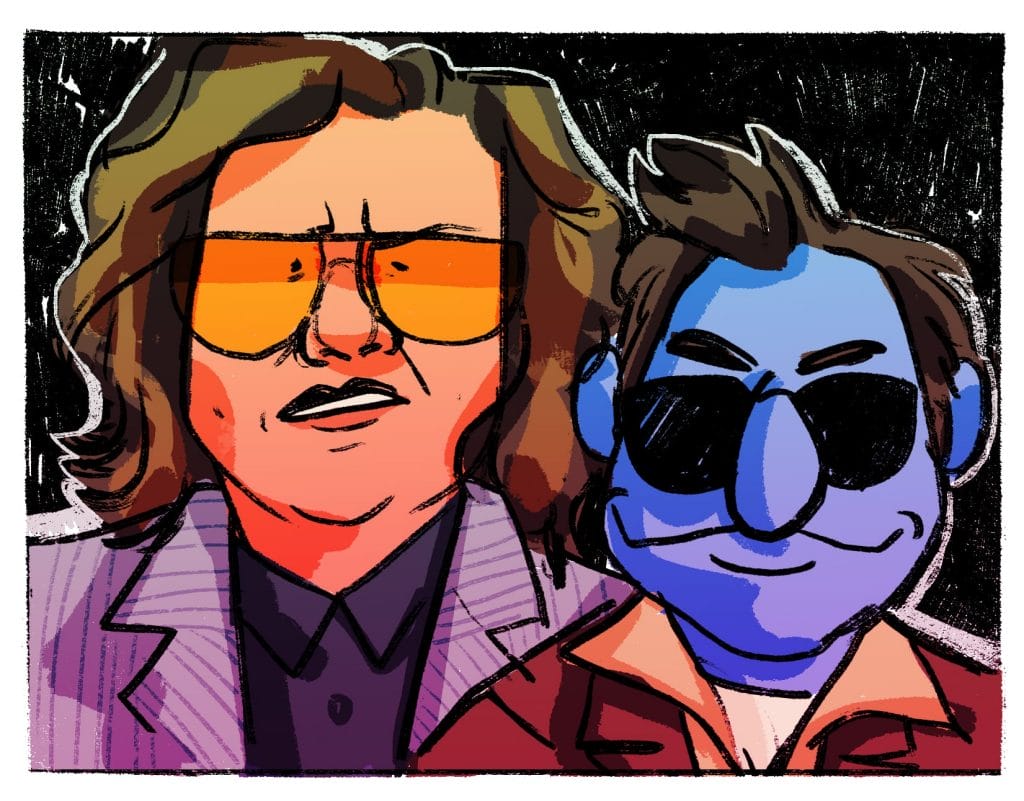“The Happytime Murders”: Sex, Drugs and Cotton

Illustration by Sammy Newman


Puppets have been a staple of children’s television since the 1970s with the likes of “Sesame Street” and “The Muppet Show,” the brain children of Jim Henson. His production company went on to create films like “Labyrinth” and “The Dark Crystal,” as well as other Muppet and Sesame Street series.
Puppets have appeared in explicit R-rated cult-films for about the same amount of time. Without going into the obligatory porn parodies, there was most famously “Meet The Feebles,” directed by Peter Jackson. It was a filthy — and at times horrific — look at the behind-the-scenes life of puppet show actors.
In 2018, these two worlds collided. Jim Henson’s son, Brian Henson, produced the raunchy buddy-cop comedy “The Happytime Murders.” Despite some chuckles and interesting ideas, the film fails to live up to either legacy.
Taking place in an alternate modern day where puppets live among us as (sort of) marginalized citizens, Phil Philips is an ex-cop-turned-private-detective puppet haunted by his past mistakes. After members of the ‘90s television show “The Happytime Gang” start showing up dead, Philips reunites with his old partner, Melissa McCarthy’s Connie Edwards, as they investigate the case.
“The Happytime Murders” is an odd amalgamation of a few genres, but it doesn’t excel at any of them. As a noir film, it’s lazily predictable. The plot is full of poorly executed cliches and cul-de-sac-like plotlines, introducing themselves and never going anywhere. Phil is an alcoholic, but he only drinks once; Connie is addicted to sugar, but it’s unclear if she has a history of abuse, or if the issue is even resolved.
These aimless story beats reflect the little effort put into creating this alternative human-puppet world. Instead of exploring how radically different this society would be, the filmmakers opt to just throw contradicting ideas at the wall.
The largest missed opportunity is the theme of puppets being treated like second-class citizens, reflecting how racism works in modern time. This idea is never developed, simply used for one-off gags or a means to an end within the plot.
The humor is just as low-brow as the premise of “puppets, but raunchy” entails, but it’s rarely obnoxious. I’ll admit there is something inherently funny about puppets acting like adults, casually cursing and smoking cigarettes. There are jokes beyond simply a puppet doing something dirty, and I did find myself chuckling here and there just at the way a puppet looked or acted.
Performances by McCarthy and Bill Barretta offer the most laughs. While McCarthy is talented when she avoids her usual pratfalls and loudness, Barretta doubles as a great comedic actor and puppeteer. He never misses a beat with Phil’s movements and gruff, grizzled voice.
I was also continually impressed by the film’s puppeteering. The variety of puppets and situations featured are as funny as they are admirable. One fight scene between McCarthy and a room of larger puppets is well shot and choreographed — It must have been a nightmare to figure out how to shoot that sequence — but it pays off as the puppets themselves are seamlessly woven into the film.
While it’s clear everyone on set was having a good time, it’s difficult to feel that joy when watching “The Happytime Murders.” The inconsistent plotlines and characters mixed with average dirty humor damage the few stand-out elements, like the puppets or the disappointingly undercooked concepts. The movie is a mess at times, but the laughs make it worth watching, though it’s nothing to rush out and see.
Samuel Goodrich, Staff Writer



